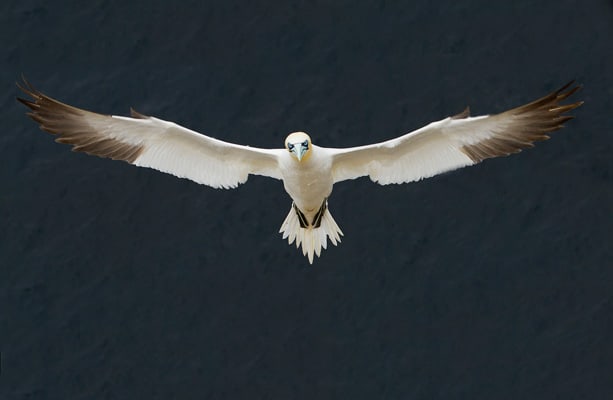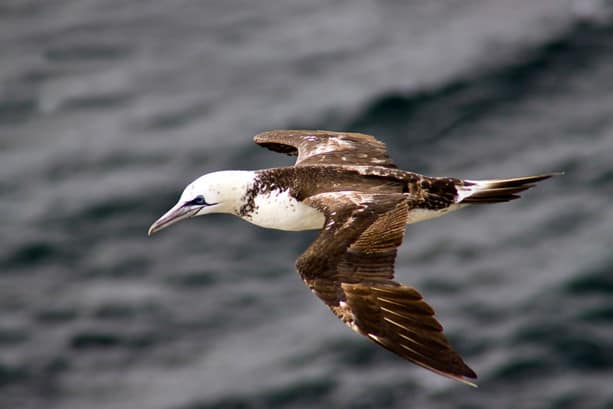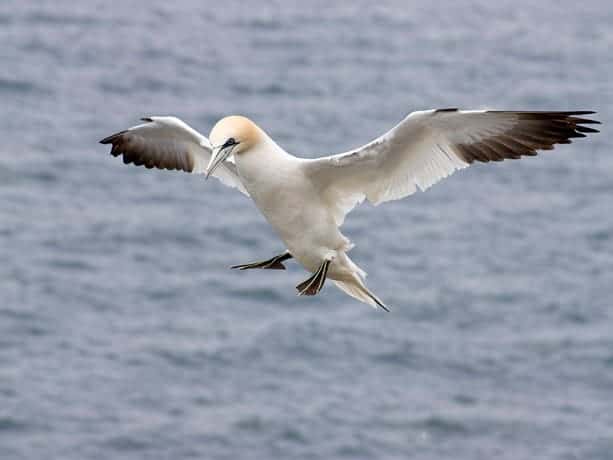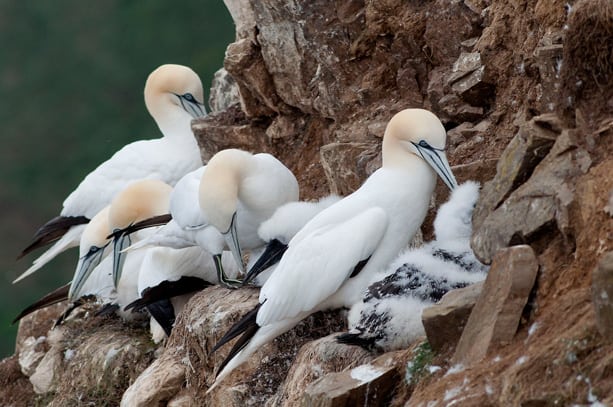On the North East coast of Aberdeenshire, between Pennan and Gardenston lies Scotland’s only mainland gannet colony. The 50m high cliffs are spectacular, and slightly scary, if you peer over the edge to take photographs.

In addition to the 2000 breeding pairs of gannet (Morus bassanus), the cliffs are home to thousands of Kittiwake, Guillemot, razorbill, Fulmar, Herring Gull and one or two puffins.

Troup Head is an RSPB reserve and for visitors there is a small car park for 8 or 9 cars, although I have never seen it full. To reach the cliffs there is a 500-600m walk through farmland before reaching the path along the cliff top. You will hear and smell the seabirds long before you reach them, and if you do visit you will not be disappointed.

The first gannets arrive in January but the breeding season doesn’t start in earnest until March or April and by the end of August the cliffs are deserted except for a few fulmar and herring gulls. The gannet is a fascinating bird to watch, apart from their distinctive look and the magnificence of their 2m wingspan they exhibit a variety of behavioural displays.

Gannets pair for life (20-30 years) and each time a pair get together they greet each other with an affectionate display of billing, vigorously knocking their bills together.
They rear a single chick each year on the narrow ledges of the cliff face. The parents take turns in looking after the nest and it would be quite hazardous to the chick if both adults left the nest together. Before one of the pair leaves it signals by pointing its head skywards until its mate gets the “I’m going now” message.

The young are born after about 45 days incubation, black, featherless, blind and weighing less than 100g. Eight weeks later they are covered in white down and heavier than the adult , finally fledging at about 13 or 14 weeks. By this time they have lost their fluffy whiteness and are almost totally dark brown.

It’s five years until maturity and the adult plumage has developed.



Bob Falconer
Bob has been a keen photographer since the age of 11 or 12 and with an added interest in wildlife, it was not long before the two were combined. Being based in Aberdeen, Scotland is a great opportunity to photograph the rich and diverse range of seabirds around the coast and the many migratory species which pass through. Not so far in the other direction is the Scottish highlands, renowned for its wild rugged landscapes and home to many iconic birds and mammals.







Leave a Reply